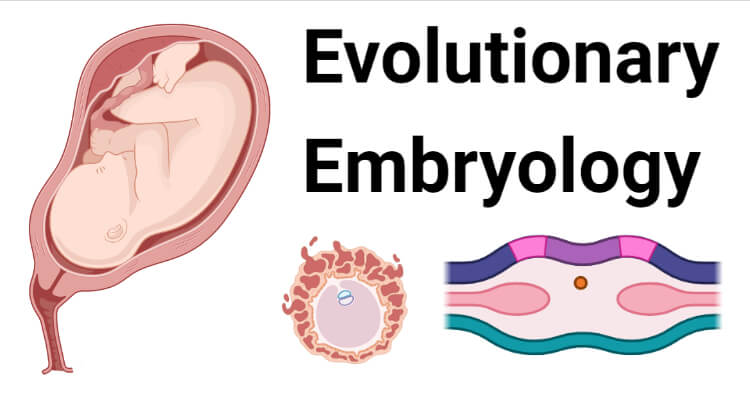- Embryology, the study of embryos, is an important cornerstone of biological evolution and can be used to help determine similarities and differences between various species.
- An embryo of an organism is the fertilized egg as it goes through the processes of development that are specific to that species.
- When looking at how the animal develops from an embryo to an adult, you can compare the processes with those of other organisms to help determine evolutionary similarities.
- Most embryos look similar in their early stages, but as they develop, the differences between species become more obvious.
- Embryos of organisms that have a closer genetic relationship to one another tend to look similar for a longer period of time since they share a more recent common ancestor.
- Thus, embryology is frequently used as evidence of the theory of evolution and the radiation of species from a common ancestor.

Interesting Science Videos
Advent of Evolutionary Embryology
- Charles Darwin’s theory of evolution first restructured comparative embryology and saw that embryonic resemblances would be a very strong argument in favor of the genetic connectedness of different animal groups.
- Darwin also noted that embryonic organisms sometimes make structures that are inappropriate for their adult form but that show their relatedness to other animals.
- He pointed out the existence of eyes in embryonic moles, pelvic rudiments in embryonic snakes, and teeth in embryonic baleen whales.
- Darwin also argued that adaptations that depart from the “type” and allow an organism to survive in its particular environment develop late in the embryo.
- He noted that the differences between species within genera become greater as development persists, as predicted by von Baer’s laws.
- Thus, Darwin recognized two ways of looking at “descent with modification.” One could emphasize the common descent by pointing out embryonic similarities between two or more groups of animals, or one could emphasize the modifications by showing how development was altered to produce structures that enabled animals to adapt to particular conditions.
Embryonic Homologies
- One of the most important distinctions made by evolutionary embryologists was the difference between analogy and homology.
- Both terms refer to structures that appear to be similar.
Homologous structures
- Those organs whose underlying similarity arises from their being derived from a common ancestral structure.
- For example, the wing of a bird and the forelimb of a human are homologous.
- Moreover, their respective parts are homologous.
Analogous structures
- Those whose similarity comes from their performing a similar function, rather than their arising from a common ancestor.
- For example, the wing of a butterfly and the wing of a bird are analogous.
- The two types of wings share a common function (and therefore are both called wings), but the bird wing and insect wing did not arise from an original ancestral structure that became modified through evolution into bird wings and butterfly wings.
Embryology and Theory of Evolution
Embryology supports the theory that organisms have a common ancestor (in accordance to theory of evolution). The theory of evolution explains that not every feature of an ancestor’s embryo is shown in its descendants. That explains why embryos develop into different species over time. Different traits are present in each embryo. Once the embryo is fully developed, it creates other embryos that have similar traits.
References
- Gilbert, S. F. (2000). Developmental biology. Sunderland, Mass: Sinauer Associates.
- Schoenwolf, G.C., Bleyl, S.B., Brauer, P.R., Francis-West, P.H. & Philippa H. (2015). Larsen’s human embryology (5th ed.). New York; Edinburgh: Churchill Livingstone.
- Sadler, T. W., & Langman, J. (2004). Langman’s medical embryology. Philadelphia, Pa: Lippincott Williams & Wilkins.
- Moore, K. L., Persaud, T. V. N., & Torchia, M. G. (2008). The developing human: Clinically oriented embryology. Philadelphia, PA: Saunders/Elsevier.
- https://www.thoughtco.com/what-is-embryology-3954781
- https://www.expii.com/t/evidence-of-evolution-embryological-10258
- https://sites.google.com/site/biology2evolutionlanesville/embryology-and evolution/embryology-what-is-it
